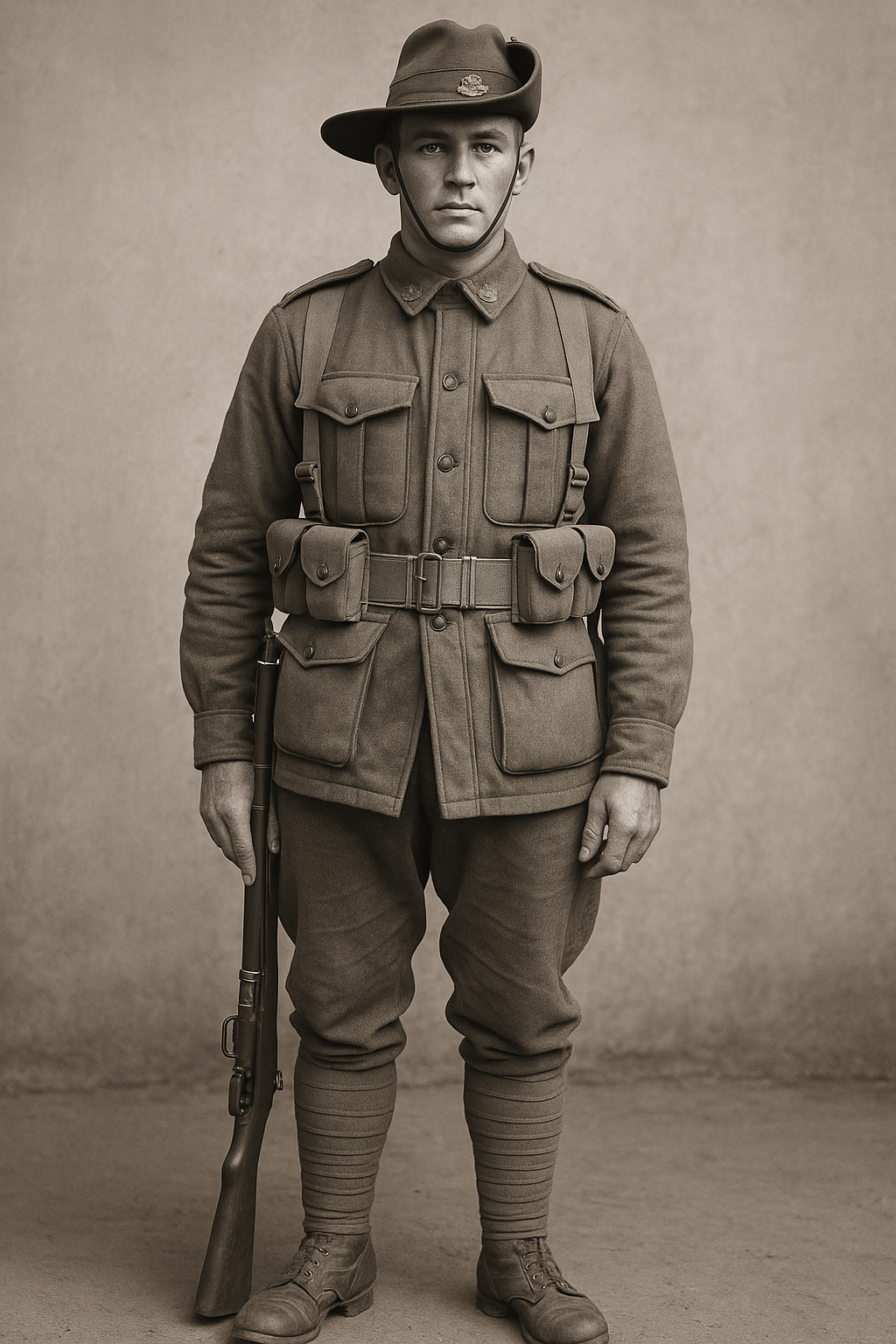
Australian Army Uniforms: Exploring the Legacy of WW1 Military Attire
Published on Jul 10, 2025
Australian Army Uniforms: Exploring the Legacy of WW1 Military Attire
When we look back at World War 1, the battles and strategies often take center stage. But behind every soldier was a uniform—a piece of fabric that symbolized courage, identity, and resilience. In this article, we delve into the fascinating world of Australian World War 1 uniforms, uncovering their origins, significance, and evolution. Whether you’re a history buff, a collector, or someone interested in AUS army uniforms, this guide offers a comprehensive look at one of the most defining elements of Australia’s military heritage.
The Beginning: Why Australian WW1 Uniforms Matter
The Australian Army uniforms worn during World War 1 were more than just military gear—they represented national pride at a time when Australia was forging its own identity on the world stage. As part of the British Empire, Australia’s initial military attire drew heavily from British designs. However, as the war progressed, Australia’s unique requirements led to the development of distinctive uniform features.
Key Features of the Australian World War 1 Uniform
1. Slouch Hat – An Iconic Symbol
The most recognizable element of the Australian WW1 uniform was the slouch hat, turned up on the left side to allow room for the rifle to rest on the shoulder. It became a symbol of the Australian soldier, or “Digger,” and is still part of ceremonial dress today.
2. Service Dress Tunic
The early war uniforms consisted of a khaki wool service dress tunic with pleated breast pockets and a high collar. The color and texture provided camouflage and warmth—essential in the trenches of France and Belgium.
3. Rising Sun Badge
Worn on the slouch hat, the Rising Sun badge became synonymous with the Australian Imperial Force (AIF). It symbolized the spirit of Australian troops and became a treasured emblem of their identity.
4. Webbing Equipment
The Australian soldier's webbing gear, typically made of canvas and leather, held essentials such as ammunition pouches, a water bottle, entrenching tools, and a bayonet. This setup evolved throughout the war for better practicality and comfort.
5. Puttees and Boots
Soldiers wore ankle boots with long cloth strips known as puttees wrapped around their lower legs. While not the most comfortable, they offered ankle support and some protection from trench mud.
Evolution of the AUS Army Uniform During WW1
As the war went on, Australian soldiers faced diverse climates—from the scorching sands of Gallipoli to the icy battlefields of the Western Front. This required adaptive changes in uniform:
- Summer Dress: Light khaki drill shirts and shorts were introduced in Middle Eastern campaigns.
- Cold Weather Gear: Greatcoats, woolen gloves, and balaclavas were distributed for colder European winters.
- Improved Camouflage: Uniform colors were occasionally adjusted for better concealment in varied terrains.
How Australian Uniforms Differed From British Counterparts
Although heavily inspired by British Army standards, several features set Australian army uniforms apart:
- The slouch hat vs. the British Brodie helmet (though both were eventually worn in the trenches).
- The inclusion of the unique Rising Sun badge.
- There are slight tailoring differences in tunics and trousers for comfort and mobility.
Women in Uniform: Australian Nurses in WW1
While men wore the khaki of the infantry, Australian nurses wore smart, navy blue capes, white dresses, and red crosses. These women played a critical role, and their uniforms represented compassion, skill, and dedication on the battlefield.
Collecting Australian WW1 Uniforms Today
For collectors and reenactors, authentic or reproduction Australian WW1 uniforms offer a tangible connection to history. Sites like Paddelaters.com specialize in accurate reproductions, helping enthusiasts preserve and showcase these important artifacts.
Tips for Collectors:
- Look for original insignias and Rising Sun badges.
- Check fabric and stitching style for authenticity.
- Pair uniforms with correct accessories like webbing, helmets, or medals.
Reenactments and Living History
Reenactors across Australia and beyond frequently wear reproduction AUS army uniforms during memorials, ANZAC Day parades, and living history events. These performances educate the public, honor veterans, and keep the memory of Australian soldiers alive.
Preserving History: Why It Matters
Understanding the Australian World War 1 uniform isn’t just about fashion or military gear. It’s about respecting the past and recognizing the sacrifices made by those who served. Whether preserved in museums or worn in reenactments, these uniforms continue to tell a story of bravery, endurance, and national identity.
Why Choose Paddelaters for Australian WW1 Uniforms?
At Paddelaters, we offer historically accurate and high-quality reproduction Australian army uniforms. Whether you're building a collection, taking part in a reenactment, or curating a museum exhibit, our uniforms are tailored to meet professional and historical standards.
- Authentic patterns and designs
- High-grade materials
- Trusted by historians and collectors
Conclusion
From the sunburnt cliffs of Gallipoli to the muddy trenches of the Western Front, Australian World War 1 uniforms were more than just clothing—they were a symbol of identity and resilience. The evolution of the AUS army uniform reflects the trials and triumphs of a young nation at war. Today, these garments remain powerful reminders of courage and sacrifice.
